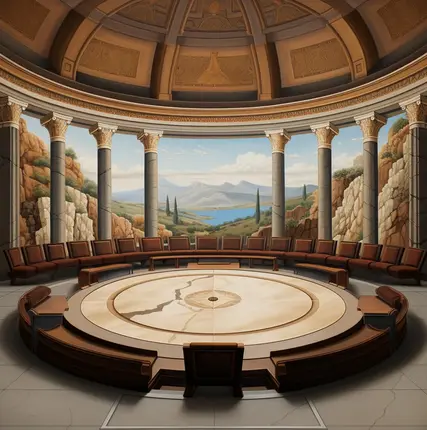Not accurate at all. You need a lot more paragraph, even better if you cut them every 2 sentences, and emoji at the end and beginning of every sentences.
- 2 Posts
- 73 Comments
If there is one thing I can proudly brag about is that I’m part of the Elite that have that running for several years. With few hiccups of missing sessions, and sometimes extra games on the same week as the “main” game.
For those stuck looking for groups, just start it yourself, you’ll be surprised how many people around would like to try and will probably like, but don’t want to start the thing themselves.

 2·2 years ago
2·2 years agoYou already had good answers but I would like to add my two cents:
The “starter set” is the cheaper option (less than 20$). It has a small prewritten adventure, a set a prewritten characters of level 1 with backstory, and the basic rules you need for this adventure.
Good point for it: cheap, the bare minimum you need to dive directly in it, already contain an adventure so it’s easier for you as a new GM.
Bad point: it only contain a small subset of the rules, and will become “useless” if you decide to go further and buy the full books. Also, if your wife or kid do not like the pregen characters, you will not have the full rules related to character creation.
Then you have the core rule set already linked.
Good point: everything you need for a very long time, you will have all the rules to run anything you want. Other books are “only” going to add more options (spell, items, characters building options, ect).
Bad point: the price (120$), more information so it may be harder to digest everything and “get into it”. It does not contain pre written adventure. You will have to find one separate or make one yourself, there are some free options available.
On top of that you don’t need anything else exept pen and paper. Dice are of course greatly recommended, but you can start with some free phone app.

 1·2 years ago
1·2 years agoWhen called with n=1 ? It’s from i=0 to i<1, so it will do only one iteration with i=0 and print one #.

 2·2 years ago
2·2 years agoYes, to better understand this you have to understand the “flow” of the program. Meaning the order at which the instructions are executed and not written.
Here you have the flow of the program starting from n =3 until the recursion reach draw(0), note that none of the for loop have been executed yet. At this point it reach the first “return” instruction and go finish the call to draw(0).
Then the flow go back to where it previously was: inside the draw(1) call just after the line calling draw(0). And it start executing the next lines of the draw(1): the for loop.
Then it reach the second “return” and proceed again until the whole program is over.

 153·2 years ago
153·2 years agoNever ever ever ever give money to someone that promise to give it after to charity. There are countless stories with proof of people who never kept the promises. Even if they did give it, they get tax benefit instead of you. It’s worth also (even more) for shop or other places that propose to round up the total and give to charity.
You want to give to charity? Just give to charity, why a middle man ?

 2·2 years ago
2·2 years agoYes, as I wrote when the method draw(n=1) finish the for loop that print one “#”, this call of the method draw return. Then the process start again from the after the line draw(n-1) of the method draw(n=2), which execute the for loop to print “##” and return. Then again you come back to after the line draw(n-1) of inside the method draw(n=3), ect.
You should keep in mind that everytime a draw(n-1) is called, the current method is “paused” until this call return.

 3·2 years ago
3·2 years agoYou are looking at a recursive method, as you can see with the line draw(n-1) inside the draw(n) method. You can search for “recursive function” on internet for a better understanding.
Basically, the method draw is called a first time n = a user input, but then this method call itself with n-1 until it reach 0. So you can think as if function draw(6) will call draw(5) and wait for it to return before continuing, draw(5) call draw(4), ect until draw(0) that return immediately.
So then the order of execution will be draw(1) that print " #\n" and return, then draw(2) will proceed to print “##\n” and return, then draw(3), ect until draw(n).

 49·2 years ago
49·2 years ago30min is considered short ? Damn, I have 15min to commute and when looking for a new place I did put a limit at 20min from my work place. Most of my colleagues have shorter commute time than me.
No suprise more than 2h wasted per day would make someone depressed.

 83·2 years ago
83·2 years agoJust buy blocks of basic hard soap. Better for your skin and your plumbing. I don’t know if it’s cheaper compared to your 10L bottle, but it’s definitely cheaper compared to normal liquid soap bottles.

 21·2 years ago
21·2 years agoI watched it purely for nostalgia reason because of the games, I decided to not read reviews about it before. There was few interesting scenes (combat scenes), but overall not worth it IMO. I kept watching hoping that it will get better and I kept being disappointed. Maybe I’ll check the season 2 though according to reviews this time.
They took a big dump on all the existing lore, and on the already well defined character of Master Chief.
Forward Unto Dawn was so much better as a Halo adaptation.
People in the comment seems to not understand that it doesn’t mean average on the “scale of beauty/attractiveness”. But averaged features. Like if you merge all nose shapes of a million person you get this nose, ect.
It was tested already several years ago that people tend to like faces made by merging a lot of faces together and “averaging” them. Most of the time rating them more attractive than the individual faces used.
I don’t find the source anymore… I’ll check better later.
 4·2 years ago
4·2 years agoBut how do you know if you love a film before buying it’d dvd if you watch only on dvd ? And if you watched it already somewhere else, what’s the point of buying the dvd ?
I can maybe fill one small shelf with DVD of movies that I enjoying re watching (maybe 20, top 30). Otherwise for nearly all the movie I watch them once and that’s done. So streaming or piracy are the best for my use case.

 3·2 years ago
3·2 years agoI wasn’t even the first, someone else posted it also while I was typing my answer.
I didn’t even re play it that much. I think in the end I probably have more playtime on Oblivion. But much better/stronger memories from Morrowind. It was maybe because I had less video game experience to compare it with, but this one clearly left a big mark on me. I still have incredible goosebumps when “the road most travelled” or “nerevar rising” sounds start playing from my playlists.
The gameplay maybe clunky compared to today, especially to combine weapon and magic. But everything else was so amazing for the time, and some part are still much better than recent games.
I even had a talk with someone at an “ai in game dev” conference who took as an exemple the way the diary/quest log of Morrowind was working.

 12·2 years ago
12·2 years agoWithout a doubt Morrowind for me.
Halo and Diablo also, in different genre.

 11·2 years ago
11·2 years agoJe sais pas si c’est une hérésie car il suffit juste de changer le nom, mais je préfère les pattes “carbo” crème/lardon (champignons) que la vrai recette italienne. Bon il faut juste pas appeller ça “carbonara”.
Sinon en vrai hérésie dont j’ai été temoin: j’ai une amie qui adore manger ses frites en les trempant dans du sorbet au citron.
I would say that willingness to exploit other, be selfish and have low ethic also play a big role.







For gaming I see your point, it looks like everything as to be a money grab nowaday which greatly reduce the quality of a lot of games.
For ttrpg I don’t feel like it though. Sure Wizard of the Coast/Hasbro has gone to shit but I left the D&D train a long time ago already. And the amount of other very good and accessible system is amazing. IMO The only thing “bad” that this new popularity bring is players with wrong expectations. Some expect every games and every DM to be of the same quality as Critical Roll or other well known podcast, some exept to find “video games” mechanic like in baldur’s gate, some are trying to force the meme stuff inside the game, ect.